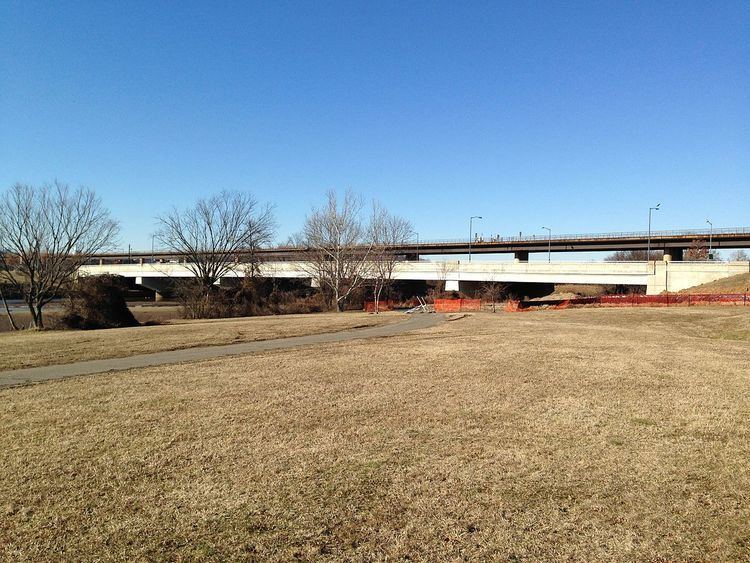Locale Washington, D.C., U.S. Opened 1961 Location Washington, D.C. | Address Washington, DC 20019, USA Total length 1,433 m Bridge type Plate girder bridge Carries Motor vehicle, Pedestrian | |
 | ||
Maintained by District of Columbia Department of Transportation Daily traffic 68,400 vehicles per day (1990) Similar Whitney Young Memorial, Kingman Lake, John Philip Sousa Bridge, Aqueduct Bridge, 11th Street Bridges | ||
Ethel kennedy bridge dedication may 21 2014
The Ethel Kennedy Bridge is a beam bridge carrying Benning Road over the Anacostia River and Kingman Island in Washington DC. It is a six-lane bridge with pedestrian lanes on both sides. A separate Washington Metro bridge carrying the Blue, Orange and Silver lines crosses over the bridge near its western terminus, and parallels the bridge on the north.
Contents
- Ethel kennedy bridge dedication may 21 2014
- Ethel kennedy bridge connecting black white east west d c
- History
- References
Ethel kennedy bridge connecting black white east west d c
History
In 1791, the state of Maryland (in which then controlled the area which would later become the District of Columbia) issued a charter to Benjamin Stoddert, Thomas Law, and John Templeman to build a bridge across the Anacostia River. Stoddert owned land (known as "Long Meadows") on the eastern shore of the Anacostia River, and a bridge would have helped him develop him land. The right to build a bridge was not exercised until 1805, when Chain Bridge was swept away during floods. Stoddert then formed the Anacostia Bridge Co., and that same year erected a $20,000 wooden bridge known as Stoddert's Bridge in this location. In the 1790s, "Captain" William Benning came from Virginia and purchased 330 acres (1.3 km2) of land on the western end of Stoddert's Bridge. The site was one of the first crossings over the Anacostia River. The bridge and "Benning's Road" were important eastern routes in and out of the District.
By 1814, the bridge—now also known as "Upper Bridge"—was in disrepair. During the War of 1812, the U.S. military commander of the Military District of Washington burned Stoddert's Bridge in an attempt to stop the British from invading the city of Washington. On March 3, 1815, the United States Congress passed legislation reimbursing the Anacostia Bridge Co. for the destruction of its bridge.
The bridge was rebuilt in 1815 by Thomas Ewell, who renamed it Ewell's Bridge. In the 1820s, Ewell sold the bridge to Benning, who renamed it Benning's Bridge. Benning built a new bridge at the site in the 1830s (although not all sources agree on the exact date).
After a major flood in 1840, the bridge was repaired. It was purchased in August 1848 by the federal government and the toll removed. In disrepair due to the large amount of traffic over the span, it was almost completely rebuilt in 1868. The structure was replaced with a steel bridge in 1892, and a concrete bridge in 1934. A second concrete bridge was constructed in 1961; the old span now carried eastbound traffic, while the new span carried only westbound traffic.
The Bridge was inspected by the District of Columbia Department of Transportation (DDOT) in 2014, and found to be structurally sound.
In 2008, the DC Council had voted to rename the Benning Road Bridge after Ethel Kennedy, the widow of the late Robert F. Kennedy, for whom a nearby stadium was named. In a May 20, 2014, the bridge was officially renamed the Ethel Kennedy Bridge to honor her for her devotion to many to social and environmental causes during her later years, especially in the neighborhoods along and near the Anacostia River.
